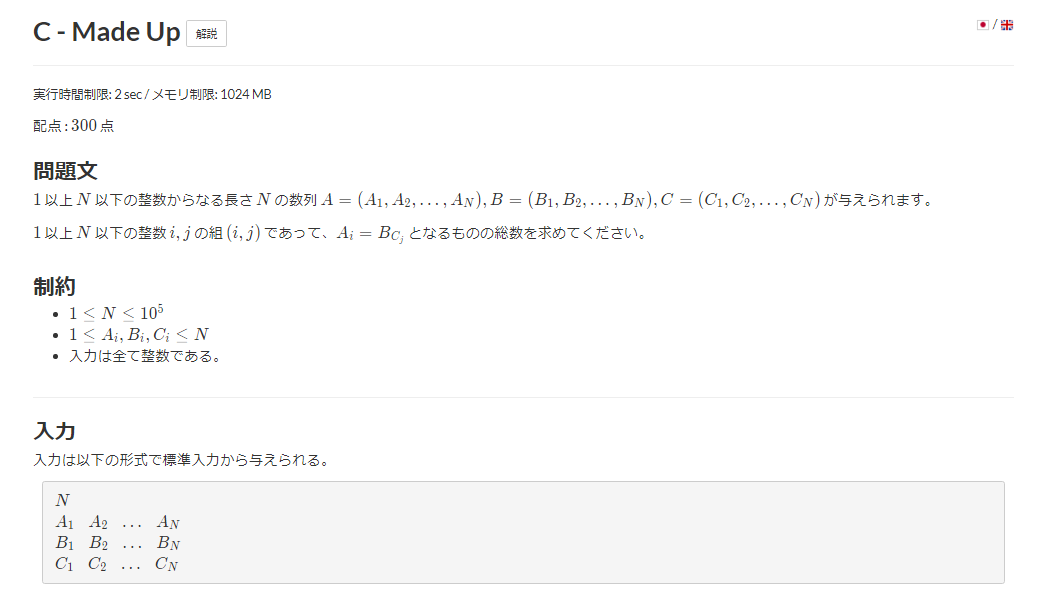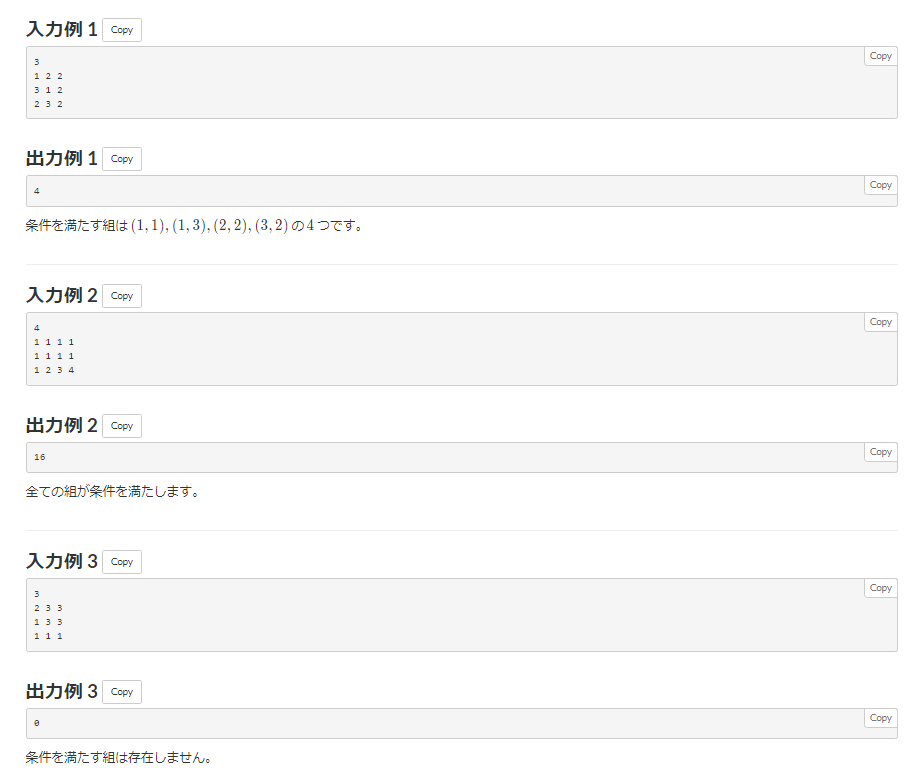いつもの通り i, j をそれぞれ for でネストして全探索したら
TLE で落ちてしまう。とりあえずサンプルを眺める
for 文で B[C[i]-1] について i で回してみよう。
その時にB[C[i]-1] と同じ値が 配列 A の中に何個あるのか数えれば良さそう。
ってことは事前に辞書で A について整理しておけば解決すると思った。
MadeUp.py
N = int(input())
A = list(map(int,input().split()))
B = list(map(int,input().split()))
C = list(map(int,input().split()))
# A の中に何の要素が何個ずつ入っているのか管理
dic = {}
for i in range(N):
if A[i] not in dic:
dic[A[i]] = 0
dic[A[i]] += 1
score = 0
for i in range(N):
try:
score += dic[B[C[i]-1]]#該当したら、その個数を積み上げる
except:
pass# B[C[i]-1] が辞書内に存在しないと言われたら pass する
print(score)
atcoder problem 灰色〇で半分くらいのレベルだったら C 問題でも何とか。。
ちょっとずつレベルを上げていきたいところですね。
おまけ
間違っても以下のようにしない方がいいと思います。
MadUp_TLE.py
N = int(input())
A = list(map(str,input().split()))
B = list(map(int,input().split()))
C = list(map(int,input().split()))
A = "".join(A)
score = 0
# 以下のように O(N^2) となるので TLE となります。
for i in range(N): #=> N
score += A.count(str(B[(C[i])-1])) # => N :
# count は都度 A の中を要素数(N) だけ探索してカウントするため
# 計算量は N と認識されます。
print(score)

